This is the third article (see Saving Water Part I and Saving Water Part II)
in a 6 part series on Saving Water. There are many environmental benefits of saving water of course, but for the end consumer, saving money seems to be the key. Living in Sydney, Australia I’m acutely aware of the value of saving water.
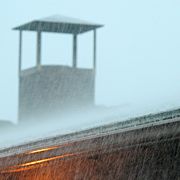 Have you ever caught yourself standing indoors during a heavy downpour, wondering where all of the excess water ends up? Obviously the garden can only drink so much, the pool may take a little and the
Have you ever caught yourself standing indoors during a heavy downpour, wondering where all of the excess water ends up? Obviously the garden can only drink so much, the pool may take a little and the
water tank takes whatever it can.
However, the rest – the vast majority – is simply thrown away.
This article – on guttering and drains – looks at several ways to improve the flow of water around your house (so you can make the most of it), and take a few steps toward the ultimate water goal : any water that falls on your property, stays on your property. No more water bills. Ever.
Water-wise gutters and drains
If you’re planning to build a new house, or replace the guttering for your existing home; you may be wondering just what types of guttering are available. Rest assured, there are many, many varieties of each – here I’ll take a look at just a few of the more unusual options. Water-wise, of course.
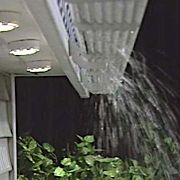 Rain Handler : This is a guttering system which actually follows much of the ‘no gutters‘ thinking – water is elegantly removed, without filling up with the dirt and debris all-too-common in guttering.
Rain Handler : This is a guttering system which actually follows much of the ‘no gutters‘ thinking – water is elegantly removed, without filling up with the dirt and debris all-too-common in guttering.
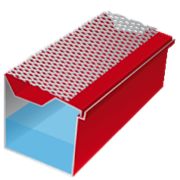
Rainsaver gutter / tank : I mentioned the rainsaver gutter / tank briefly in my last article about the benefits of using a water tank. Quite simply, it collects the rainfall from the roof; temporarily storing it in a slim tank just beneath the roofline. If your heart is set on guttering of some sort, this is a great idea.
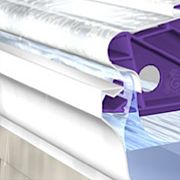 Gutter Monster : for those living near a number of trees, guttering such as the Gutter Monster is perfect. Leaves 0 : Water 1.
Gutter Monster : for those living near a number of trees, guttering such as the Gutter Monster is perfect. Leaves 0 : Water 1.
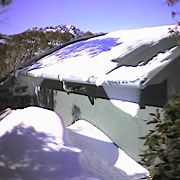 Snow Gutters : I love these. If you live in snow country, you’ll quickly see why. This is an incredibly strong, flexible guttering system designed specifically for buildings which receive their fair share of snow and ice. Rather than being allowed to build up on the roof, the snow is allowed to slide off onto the ground.
Snow Gutters : I love these. If you live in snow country, you’ll quickly see why. This is an incredibly strong, flexible guttering system designed specifically for buildings which receive their fair share of snow and ice. Rather than being allowed to build up on the roof, the snow is allowed to slide off onto the ground.
Great idea.
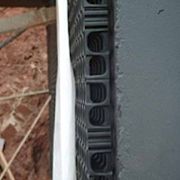 Atlantis Wall Drainage : these drainage cells come in a great range of shapes and sizes – ready for inclusion in walls, paved areas, gardens and lawns. To get an idea of just how they can be used, take a look at these photos of a Wall Drainage setup in a Sydney car park. Superb.
Atlantis Wall Drainage : these drainage cells come in a great range of shapes and sizes – ready for inclusion in walls, paved areas, gardens and lawns. To get an idea of just how they can be used, take a look at these photos of a Wall Drainage setup in a Sydney car park. Superb.
NB : These are also perfect for a number of residential uses; particularly around gardens.
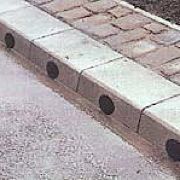 Beany Block : Like many inventions, a quick look at this begs you to ask ‘why didn’t someone think of that before’. Brilliantly simple idea.
Beany Block : Like many inventions, a quick look at this begs you to ask ‘why didn’t someone think of that before’. Brilliantly simple idea.
Conventional roadside guttering acts to channel the water along to a specific point, where it is poured into a massive drain. Beany Blocks – developed around two decades ago by Highways Engineer Neill S.
Beanland – are sections of guttering containing an embedded drainage channel. Each section has a large opening to allow the water to enter the channel directly.
Fantastic idea.
Adding value to your house
If you’re not ready to make massive changes to the guttering and drainage around your property, there are a number of small things you can do which will not only increase your water efficiency (saving water of course); they will also add value to your house.
They are :
 Round the corners : many plumbers have a habit of creating sharp corners in water pipes – particularly outside the house. Take a walk around your property. Whenever you see a right-angled bend, replace it with a curved section of pipe. Water will flow much more easily around it.
Round the corners : many plumbers have a habit of creating sharp corners in water pipes – particularly outside the house. Take a walk around your property. Whenever you see a right-angled bend, replace it with a curved section of pipe. Water will flow much more easily around it.
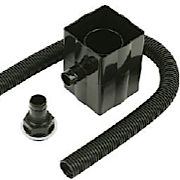 Rainwater diverters : if you’re not quite ready to install water tanks, consider grabbing a simple rainwater diverter. This will divert excess rainwater from your roof – via a normal garden hose – to anywhere more useful. A covered garden perhaps, or a lawn that needs a helping hand.
Rainwater diverters : if you’re not quite ready to install water tanks, consider grabbing a simple rainwater diverter. This will divert excess rainwater from your roof – via a normal garden hose – to anywhere more useful. A covered garden perhaps, or a lawn that needs a helping hand.
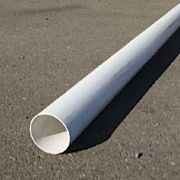 Keep some of the stormwater : it’s common to see pipes leading from the house into the closest street, where excess water is channeled into the community’s stormwater system (thrown back into the sea). Expose these pipes, drill a few holes in them and let some of this excess flow back into the soil (in dry areas – you’re not trying to create a flood). If you have trees in front of your property, this is a great way to keep them happy.
Keep some of the stormwater : it’s common to see pipes leading from the house into the closest street, where excess water is channeled into the community’s stormwater system (thrown back into the sea). Expose these pipes, drill a few holes in them and let some of this excess flow back into the soil (in dry areas – you’re not trying to create a flood). If you have trees in front of your property, this is a great way to keep them happy.
Where do I go from here?
If you’re anything like me, the above solutions are more than enough to start the wheels turning. When it comes to self-sustainability, managing your water use – and eliminating your water bills entirely – is definitely achievable.
To get a good idea of the things that work well in your area (or the one in which you intend to live), simply wait until the next time it rains; and take a look at a few nearby houses, lawns and roads. You’ll quickly get an idea of the types of water management that are necessary.
Final thoughts on guttering and drains
Although it may seem like a small part of the water-saving puzzle, managing the flow of water around your property can prevent flooding, keep the gardens happy, the pool full and ensure there’s plenty of clean drinking water whenever you need it. It doesn’t get much better than that.
This is the third article in this series on Saving Water. If you missed the previous pieces, you can grab them here :
Comments are closed.